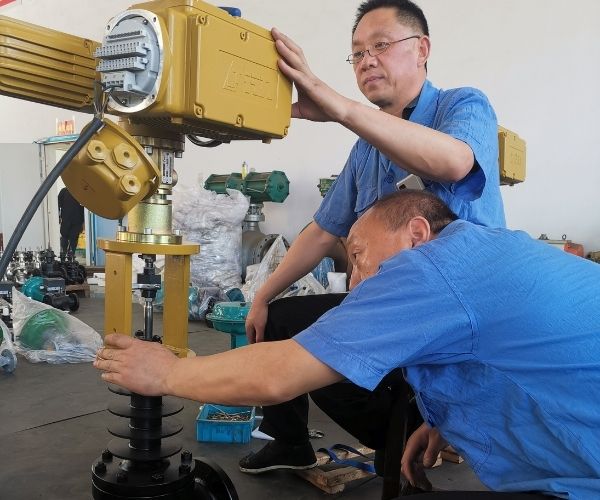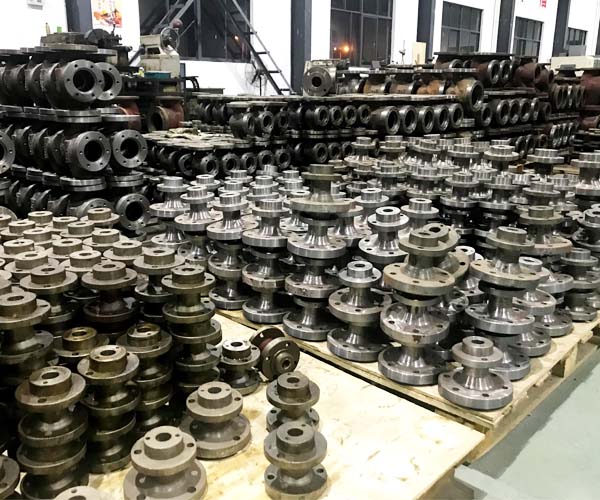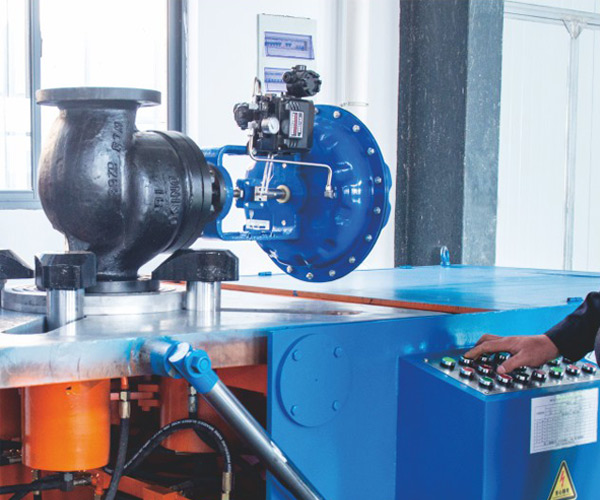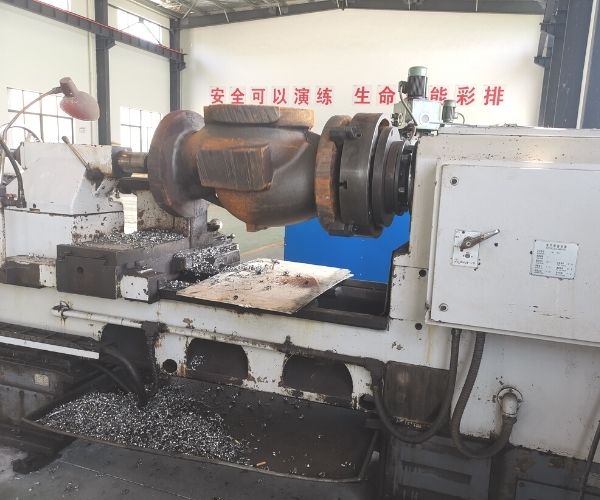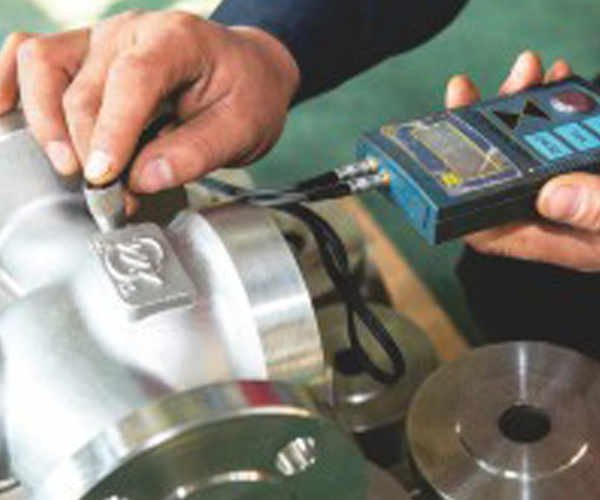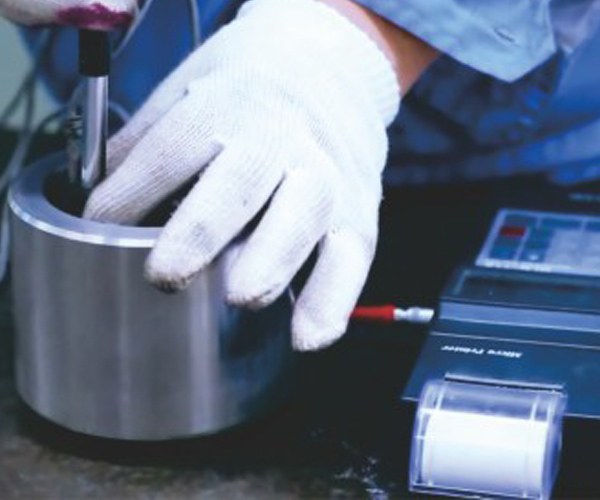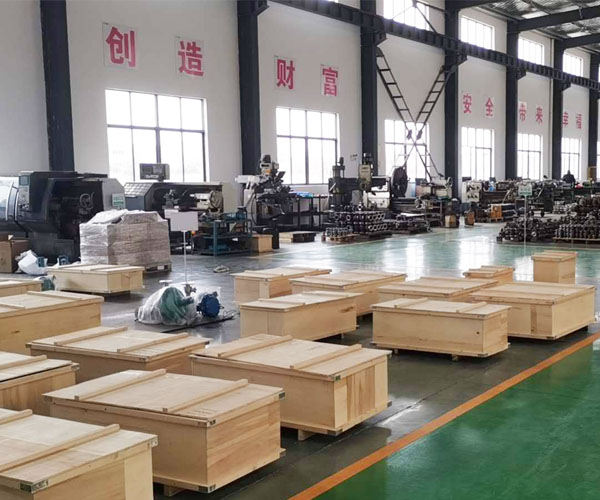Professional Segment Ball Valve Manufacturer
- Hard-treated trim parts, which is grinded, and polished, of high degree of finishing and wear resistance.
The cavity is designed based on straight-through and streamlined type, which can prevent blocking up and improve the steady of action.
Shearing action ball and the valve can clean themselves, which is suitable for various kinds of gas and liquid and especially for the liquid containing paper pulp, sewage, and containing solid particles.
Get in Touch with Us
BCST your Expert Segment Ball Valve Supplier in China
Segment ball valves are control valves with V-notch contour segments in the balls. They have reasonable control, rangeability, and shutoff capability. In addition, segment ball valves can produce high quantities of non-clogging flow control.
Segment ball valve manufacturers design the ball with unique contours to increase capacity, shutoff integrity and seal life. As a result, segment valves are economical and practical. These valves may have a wide range, from small and lightweight valves to large, heavy ones.
It is a quarter turn ball valve. It functions in the same manner as an eccentric plug valve. The shafts of the valve enlarge the center flow path. On one side of the ball is a driving shaft, and on the other is a follower shaft. The ball rotates as the driving shaft, exposing the flow path through the V-notch. Because of a small area of flow at low and high travel, a large flow area is produced. V-notch segment ball valves can be provided in two ends, the flanged and flangeless ends.
BCST your Segment Ball Valve Solution in China
Segment ball valves are employed in harsh environments to deliver optimal control and on/off applications, thanks to their durable and reliable characteristics. In addition, these lightweight valves are easy to install and handle. These segment ball valves are utilized in many industries, such as paper and pulp businesses, oil refineries, and petrochemical services. Even when used in harsh environments, these valves are rugged and dependable.
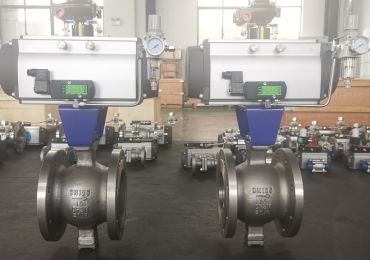
Pneumatic segment ball valve
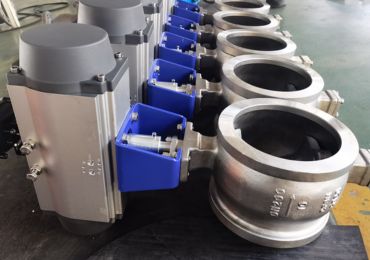
Wafer segment ball valve
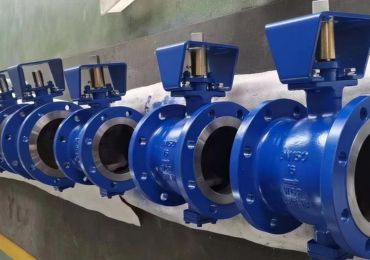
flange segment ball valve
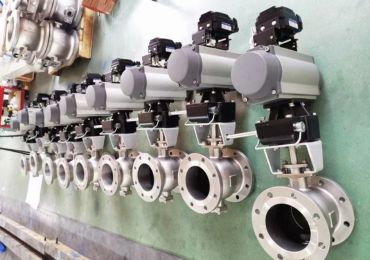
Segment control ball valve
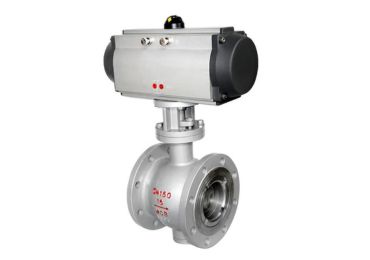
Pneumatic v shape segment ball valve
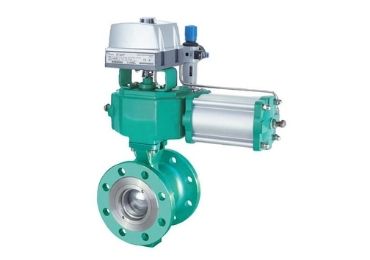
Segment V-type ball Valve
BCST your BEST Supplier for Segment Ball Valve
Segment ball valve is a quarter turn ball valve. It functions in the same manner as an eccentric plug valve. The shafts of the valve enlarge the center flow path. On one side of the ball is a driving shaft, and on the other is a follower shaft. The ball rotates as the driving shaft, exposing the flow path through the V-notch. Because of a small area of flow at low and high travel, a large flow area is produced. V-notch segment ball valves can be provided in two ends, the flanged and flangeless ends.
Paper and pulp industries use segment ball valves to control flow. They are also utilized in chemical plants to control the flow of chemicals. They can be used in sewage treatment plants to control the flow of solids, particularly chemicals. They regulate the flow of fluids in power plants that heat and cool. They are used in oil plants to prevent flammable materials from leaking. Pharmaceutical firms use segment ball valves to regulate the flow of production substances. Because they are simple to clean and take care of, segment ball valves are commonly used in food businesses.
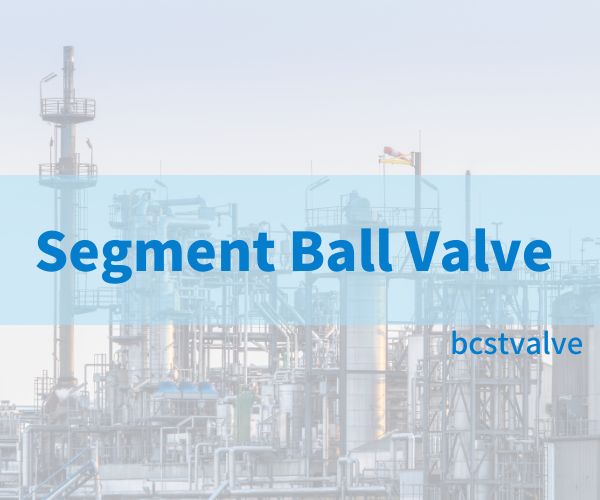
BCST Segment Ball Valve Quality Control
- Technical software caculation
- Technical team meeting
- CAD drawing confirmation
Assembly
- Installation
- Calibration
- Chemical Analysis
- Mechanical Propery
- dimension Checks
- Visual Checks
- Non-destruction Examination
Hydrostatic Test
- Shell test
- Sealing test
- Leakage test
- Air test
- Function test
- CNC machining
- Visual checks
- Dimensional checks
- Liquid penetration test
Outlook Treatment
- Surface Polish
- Painting
- Visual inspection
- Thickness checks
- Visual checks
- Liquid penetration
- Test
- Hardness test
- Lapping
- Dimensional checks
Packing
- Marking
- Exported wooden box
Get the Latest Catalogue Now!
BEST Segment Ball Valve Manufacturer from China
Body
Model | VQ 677Y |
Structure | Segment ball |
Nominal Diameter | Wafer type 1/2”~10” (DN15~DN250), Flange type: 1”~28”(DN25~DN700) |
Pressure Rating | ASME Class 150 ~ CLASS 300 |
Connection | Flange Type (RF 、RTJ 、FM)、 Wafer type |
Body Material | WCB, WCC, WC6, WC9, LCB, CF8, CF8M, CF3 .etc |
Trim Material | Carbon steel 、304 、316 、316L 、17-4PH |
Packing | PTFE, Flexible Graphite |
Washer | Serrated washer (extremely soft CS, SUS316.etc), wound gaskets |
Characteristic | EQP, Quick open |
Ratio | 100:1 |
Seal Surface | Soft seal 、 Metal seal |
Travel | 90° |
Coating | Black for Carbon Steel, Stainless steel without coating |
Actuator
Model Spec | Pneumatic Piston | Crank Arm Piston |
6300 | 6500 | |
Power/Air Supply | Air supply: 400~600Kpa | Air supply: 400~600Kpa |
Joint | Rc1/4”, Rc3/8”, Rc1/2”, | ———- |
Direct action | Air increase, valve close | Signal increase, valve close |
Reverse action | Air increase, valve open | Signal increase, valve open |
Double action | According to signal converting |
|
Ambient Temp | -30~+70C | -30~+70C |
Standard Coating | Yellow | ———— |
Accessries | Solenoid valve, Limited switch Air filter, locker, etc. | Solenoid valve, Limited switch Air filter, locker, etc. |
Performance
Rated CV | According to “Flow Characteristic” |
Characteristic | Equal to EQP |
Ratio | 100:1 |
Leakage | ANSI/FCI70-2 和 IEC60534-4 Class VI-Soft; Class IV – metal seat |
Hysteresis | 3% (Positioner), 1% (Without positioner) |
Linear | 5% (Positioner), 1% (Without positioner) |
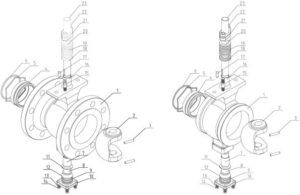
Parts details list
No | Name | Qty | Material | ||
1 | Valve body | 1 | WCB | CF8 | CF8M |
2 | Segment ball | 1 | CF8+HCr | CF8+HCr | CF8M+HCr |
3 | Cylindrical pin | 2 | 304 | 304 | 316 |
4 | Seat | 1 | 304+Hard Alloy | 304+Hard Alloy | 316 |
5 | Spring | 1 | 316 | 316 | 316 |
6 | O ring | 1 | Fluororubber | Fluororubber | Fluororubber |
7 | Self lubricant bearing | 1 | 304+PTFE | 304+PTFE | 316+PTFE |
8 | Down stem | 1 | 20Cr13 | 304 | 316 |
9 | O Ring | 1 | Fluororubber | Fluororubber | Fluororubber |
10 | Back gland | 1 | WCB | CF8 | CF8M |
11 | Ring gasket | 1 | PTFE | PTFE | PTFE |
12 | Adjustable gasket | 1 | PTFE | PTFE | PTFE |
13 | Flat gasket | 4 | Q235 | 304 | 304 |
14 | Bolt | 2 | 25# | 304 | 304 |
15 | Double screw bolt | 1 | 25# | 304 | 304 |
16 | Self lubricant bearing | 1 | 304+PTFE | 304+PTFE | 316+PTFE |
17 | Flat key | 1 | 20Cr13 | 304 | 316 |
18 | Down packing | 1 | PTFE | PTFE | PTFE |
19 | Middle packing | 1 set | PTFE | PTFE | PTFE |
20 | Up packing | 1 | PTFE | PTFE | PTFE |
21 | Packing gland | 1 | WCB | CF8 | CF8M |
22 | Bolt | 2 | 35# | 304 | 304 |
23 | Up stem | 1 | 20Cr13 | 304 | 316 |
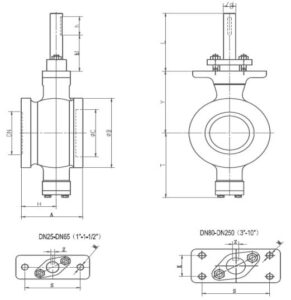
Wafer connection without actuator
DN | A | B | C | T | Y | L | T | φ | d | h | S | K | M | Z | Tor. |
25 | 50 | 30 | 68 | 38 | 81 | 73 | 102 | 75 | 16 | 35 | 75 | / | 2-M10 | 5 | 32 |
32 | 60 | 35 | 76 | 45 | 86 | 78 | 100 | 75 | 16 | 35 | 75 | / | 2-M10 | 5 | 40 |
40 | 60 | 35 | 84 | 50 | 90 | 80 | 102 | 75 | 16 | 35 | 75 | / | 2-M10 | 5 | 76 |
50 | 75 | 43 | 100 | 62 | 93 | 90 | 104 | 75 | 16 | 35 | 75 | / | 2-M10 | 5 | 90 |
65 | 100 | 50 | 118 | 73 | 108 | 105 | 102 | 75 | 16 | 35 | 75 | / | 2-M10 | 5 | 100 |
80 | 100 | 57 | 132 | 90 | 123 | 118 | 110 | 75 | 20 | 35 | 90 | 28 | 4-M10 | 6 | 140 |
100 | 115 | 65 | 158 | 115 | 138 | 130 | 108 | 75 | 20 | 35 | 90 | 28 | 4-M10 | 6 | 150 |
125 | 129 | 78 | 184 | 134 | 148 | 145 | 110 | 80 | 25 | 40 | 90 | 28 | 4-M10 | 8 | 200 |
150 | 160 | 95 | 216 | 164 | 170 | 170 | 124 | 94 | 30 | 50 | 110 | 40 | 4-M12 | 8 | 300 |
200 | 200 | 120 | 268 | 206 | 200 | 201 | 124 | 94 | 30 | 50 | 110 | 40 | 4-M12 | 8 | 500 |
250 | 240 | 148 | 326 | 260 | 240 | 237 | 140 | 98 | 40 | 60 | 135 | 40 | 4-M16 | 12 | 800 |
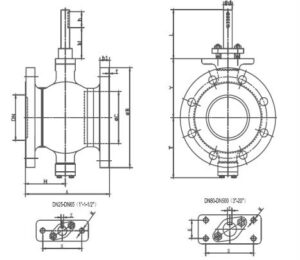
DN | A | H | B | b1 | f | C | T | Y | L | L | 0d | h | S | K | M | Z | Tor. |
25 | 102 | 51 | 115 | 16 | 2 | 38 | 81 | 73 | 102 | 75 | 16 | 35 | 75 | / | 2-M10 | 5 | 32 |
32 | 102 | 51 | 140 | 18 | 2 | 45 | 86 | 78 | 100 | 75 | 16 | 35 | 75 | / | 2-M10 | 5 | 40 |
40 | 114 | 57 | 150 | 18 | 2 | 50 | 90 | 80 | 102 | 75 | 16 | 35 | 75 | / | 2-M10 | 5 | 76 |
50 | 124 | 60 | 165 | 20 | 2 | 62 | 93 | 90 | 104 | 75 | 16 | 35 | 75 | / | 2-M10 | 5 | 90 |
65 | 145 | 70 | 185 | 20 | 2 | 73 | 108 | 105 | 102 | 75 | 16 | 35 | 75 | 28 | 2-M10 | 5 | 100 |
80 | 165 | 75 | 200 | 20 | 2 | 90 | 123 | 118 | 110 | 75 | 20 | 35 | 90 | 28 | 4-M10 | 6 | 140 |
100 | 194 | 92 | 220 | 22 | 2 | 115 | 138 | 130 | 108 | 75 | 20 | 35 | 90 | 28 | 4-M10 | 6 | 150 |
125 | 194 | 97 | 250 | 22 | 2 | 134 | 148 | 145 | 110 | 80 | 25 | 40 | 90 | 40 | 4-M10 | 8 | 200 |
150 | 229 | 110 | 285 | 24 | 2 | 164 | 170 | 170 | 124 | 94 | 30 | 50 | 110 | 40 | 4-M12 | 8 | 300 |
200 | 243 | 120 | 340 | 24 | 2 | 206 | 200 | 201 | 124 | 94 | 30 | 50 | 110 | 40 | 4-M12 | 8 | 500 |
250 | 297 | 148 | 405 | 26 | 2 | 260 | 240 | 237 | 140 | 98 | 40 | 60 | 135 | 40 | 4-M16 | 12 | 800 |
300 | 338 | 190 | 460 | 28 | 2 | 316 | 286 | 282 | 140 | 98 | 40 | 60 | 135 | 64 | 4-M16 | 12 | 1400 |
350 | 400 | 221 | 520 | 30 | 2 | 372 | 330 | 337 | 170 | 125 | 50 | 60 | 140 | 80 | 4-M16 | 14 | 2000 |
400 | 400 | 220 | 580 | 32 | 2 | 420 | 367 | 372 | 212 | 172 | 60 | 80 | 170 | 90 | 4-M16 | 18 | 2900 |
450 | 520 | 290 | 640 | 40 | 2 | 470 | 422 | 432 | 240 | 172 | 70 | 90 | 190 | 90 | 4-M16 | 20 | 3400 |
500 | 600 | 320 | 715 | 44 | 2 | 516 | 490 | 498 | 250 | 180 | 80 | 100 | 190 | / | 4-M16 | 22 | 5000 |
Segment Ball Valve -FAQ
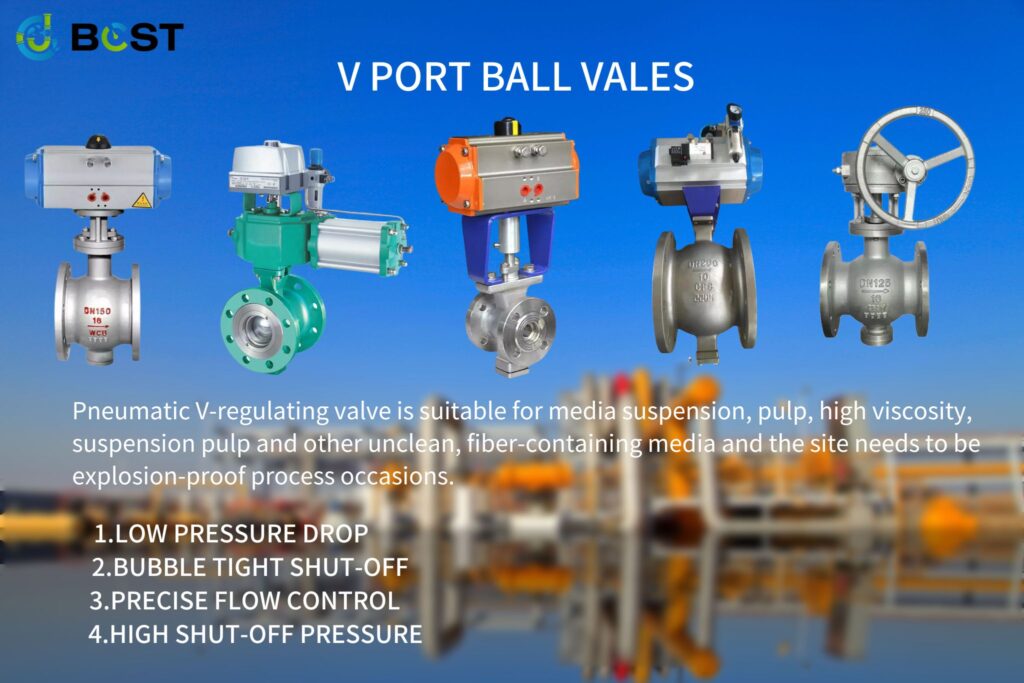
I What is a Segment Ball Valve?
Segment ball valves are designed with a V-notch contour segment in the ball. This type of valve has reasonable control, rangeability, and shutoff capability. In addition, the valve can produce high capacity and non-clogging flow control. It is also known to be economical and of high performance. These valves can be of a wide variety, from small and light valves to large and heavy valves.
The lightweight segment ball valves are easy to mount and handle. On the other hand, the heavyweight segment ball valves are used in harsh environments to deliver optimized control and for on/off applications. Due to such features, segment ball valves find use in many industries, such as paper and pulp industries, refineries, and petrochemical services, among others. In addition, these valves are durable and reliable even when used in harsh environments.
II What is the Components of Segment Ball Valve
- Valve Housing.This is the component that is used to house all the internal components of the ball valve. This part is made using rigid and hard materials, thermoplastic-lined metallic materials, or thermoplastics to protect the elements of the valve. This part also allows the external components to access the controlling mechanism to rotate the ball, thus opening or closing the flow.
- Segmented Bullet.This is a V-shaped bullet. This segment ball is used as the opening for the fluid to flow. In addition, the segmented ball provides shear action to produce flow characteristics.
- The shafts connect the segment ball valve control mechanism to rotate the segmented ball. The shafts are made with packing rings, O-rings that help seal the shaft, and a bonnet to prevent leakage. The shaft can be operated manually via a pneumatic or electric actuator.
- The seat seals between the segment ball valve body and the segmented ball.
- Bearing seals. These seals protect the metal bearings from the ingress of liquids.
III How Does a Segmented Ball Valve Work?
Segment ball valves are used for liquid and gas applications, including water, steam, pressure, vacuum, and other fluid systems. They feature a segmented design that helps to enlarge the flow area of the valve. The segmented design also helps to improve durability because it allows the valve to withstand more pressure than conventional designs.
The segment ball valve has a quarter-turn operating mechanism with a driving and follower shaft that rotate opposite directions. When these two shafts rotate together, they open or close a flow path through the valve. The V-notch design of this type of ball allows for more direct flow because there is less resistance than with an eccentric plug design.
A segment ball valve can have two end connections: flanged and flangeless connections. These types of connectors are typically found on larger valves where additional support is needed for installation.
What Types of Segmented Ball Valves
Side Entry Segment Ball Valve
The side entry segment ball valve is a type of valve that offers high performance. This valve is manufactured according to the O type of ball valve. The side entry ball valve helps to convey solid-gas and solid-liquid two-phase medium. This means that this valve can conveniently control the flow of solids and liquids or gases and solids.
Side entry segment ball valves are used in a wide range of applications and can be used as flappers, check, pilot, or isolation valves. The design of the valve ensures that it can work with a wide range of media under pressure up to 100MPa. The valve has a long lifetime with high reliability and good product quality; it has high performance under low pressure; its structure is simple and easy to operate; it has good sealing performance with no leakage after pressure increase.
Top Entry Segment Ball Valve
The top entry segment ball valve is suitable for pharmaceutical, chemical, and food processing where excellent and fast cleaning is needed. In addition, this segment ball valve has certain advantages, which make it preferred in industries that need clean products.
Top entry segment ball valve is durable due to its stainless-steel construction which makes it last longer than other valves made from plastic material or other metals such as copper or aluminum. This ensures there will not be any leakage of chemicals even if the valve gets damaged during installation or maintenance procedures by replacing parts on time without causing any leaks during normal operating conditions.
V What is Features of Segment Ball Valves
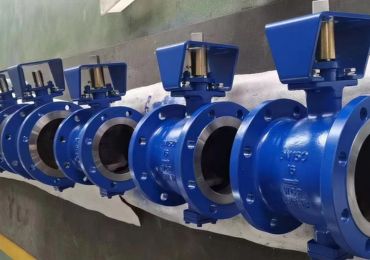
Valve Body
Segment valves are used in industrial settings where there is a need for high-pressure and high flow. They are designed to withstand extreme pressures, flow rates, and the stresses of being closed and opened.
Segment ball valves have segmented bodies that help to provide greater rigidity against fluctuations in pipe loads. In addition, these valves have a side entry structure that enhances rigidity and makes it is difficult because leaks and deformations are difficult despite the high stresses due to the fluid and the closing torque.
Segment Ball
Segment ball valves are ideal for high-throughput applications like syrup services. The V-port segment ball provides a wide range of abilities to control fluid flow and is suitable.
for applications with high consistency and syrup services. It’s designed with the optimum flow in mind to provide a smooth, consistent flow even under pressure.
The hard-coated spherical face prevents galling, so you can be sure that your equipment will continue to perform at its best—even when running through rigid material!
Bearings
The segment ball valve designs employ double bearings on the lower and upper valves that provide good stability. This makes the contact surface with the stem more significant, enhances the low coefficient of friction and high carrying capacity, and reduces operating torque.
The segment ball valves are designed for medium to large-size flow applications. The segmented design helps to reduce the operating force at the valve seat, which creates a smoother flow curve with less friction for better efficiency.
Soft Seat and Metal Seal
Ball valves come in two types: PTFE or RPTFE seats. The material used to make the seats depends on the intended medium of flow, which is usually water or oil. Seats of PTFE or RPTFE have excellent seal performance and can be used with various liquids without causing corrosion issues.
The material used to make ball valves varies depending on their purpose as well as its intended use; PTFE is typically used where high temperatures may be encountered, while RPTFE has better corrosion resistance when exposed to chemical vapors or other harsh environments such as chemical plants or gas stations that handle volatile materials like gasoline vapors.
Economy
Ball valves are used in many industries and applications, including the oil & gas industry, chemical processing, and food processing. These valves are critical to producing and distributing oil, gas, chemicals, and water.
Segment ball valve manufacturers aim to make these valves as lightweight as possible and of small stem torque. These critical design parameters result in the installation of the valve with a small electrical system or pneumatic actuators and cost-effective relative to small size or other regulating valves.
VI How to Select Segment Ball Valves
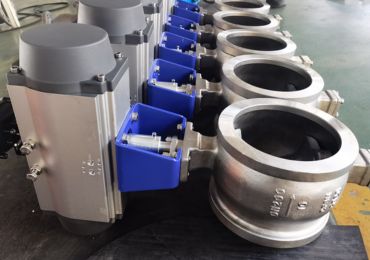
- Type of Operation
This is the case where the type of actuator feed mechanism needs to be decided. The actuator can be manual, pneumatic or electric. The actuator type depends on the power source available, for example, electricity or compressed air, as well as the required torque. Pneumatic actuators provide high torque values, while electric actuators have a high initial cost, but their operating cost is lower relative to pneumatic ones.
- Housing Material
The ball valve shall be such that the material used to make the housing is compatible with the fluid to be controlled.
- Brass is suitable for non-corrosive and neutral media, durable, resists high temperatures, and is not ideal for salty water, acids and chlorides.
- Stainless steel is resistant to chemicals, abrasion-resistant, and resistant to high temperatures, but not good to chlorides, hydrochloric acids, bleach, and bromine.
- PVC material is suitable for corrosive fluids like acids, salty water, bases, and organic solvents. However, it is not resistant to chlorinated and aromatic hydrocarbons. In addition, PVC temperature and pressure resistance are lower than brass and stainless steel.
- Pressure Rating
The segment ball valve selected should withstand maximum and minimum fluid pressure during operation. The pressure rating of the ball valve will be determined by the material used to make the housing. For example, strong materials like stainless steel can withstand high pressure compared to PVC material.
- Working Temperatures
Different segment ball valve materials can withstand various temperature levels from minimum to maximum values. The seal and housing material determine the temperature range of the segment ball valve. For example, brass material can withstand temperatures in the field of 20°C to 60°C, stainless steel material can withstand temperatures between 40°C and 220°C, while the ball valve with PVC segment withstands temperatures between 10°C and 60°C.
VII What is the Standards and Approvals for segment ball valve
Depending on the use of the segment ball valve, the valve manufacturers may need to follow specific standards from regulatory bodies. This is often necessary for the use of valves in drinking water, food, pharmaceuticals, or gas.
Standards for segment ball valves includes, American National Standards Institute (ANSI), European Agency for the Evaluation of Medicinal Products (EMEA), and International Organization for Standardization (ISO).
VIII What is the Applications for segment ball valve
- Segment ball valves control flow in paper and pulp industries.
- These valves are used to manage the flow of chemicals in chemical plants.
- They are used in wastewater treatment plants because they can work on solid particles.
- They are used in the electrical industries to control the flow of heating and cooling fluids.
- They are used in the oil industry because they can resist flammable products.
- Segmented ball valves are used in the pharmaceutical industries to regulate the flow of process compounds.
- They are used in food industries because of their ease of cleaning and maintenance.
What is the Advantages and disadvantage for segment ball valve
Advantage
- High efficiency.
- Simple in design.
- Segment ball valve design makes them of small weight and volume.
- Easy to disassemble and repair.
- Segment ball valve design makes them have a perfect seal.
- Provide low-pressure drop and high flow rates.
- Opens and closes quickly.
- These valves are easy to clean.
Disadvantage
- Cavities around the seat tend to cause blockage.
- When used in solid particles, it can get eroded and thus start leaking fluid and failing.
Summary
BCST One-Stop Segment Ball Valve Solution from China
The segment ball valve is an essential part of any industrial process. These valves are used in various industries, such as petrochemical, pharmaceutical, food, sewage treatment, and chemical. They have many applications due to their superb features, such as ease of cleaning and repair, simple design, small size and weight, corrosion resistance, and high strength-to-stand slurries. When purchasing a segment ball valve, essential parameters are actuator type, pressure rating, working temperatures (in both liquid and gas), housing materials (stainless steel or other options), standards (ANSI B31.41), and approvals (ISO 9001:2008).
BCST Group Co., Ltd. is a leading control valve and instrumentation manufacturer in China. BCST has developed into a massive pneumatic and electric control valve and instrumentation company over the last 20 years, integrating research and development, casting, production, sales, and after service into one platform. The items are employed in O&G, pipeline, petrochemical, metallurgical, power plants, food, pharmaceutical, and other industrial sectors, among others.
BCST offers a wide range of quarter-turn valves, including pneumatic and electric control valves, butterfly valves, ball valves, and gate valves, in ANSI, API, BS, DIN, JIS, and GB standards with sizes from ½” to 64” and pressure ratings from ANSI Class 150lb to 2500lb. In addition, BCST produces pneumatic actuators, electro-pneumatic positioner as required, and valve repair parts for service. Temperature ranges from -196°C to 695°C, and conventional carbon steel and stainless steel are available to special alloy steel, -196°C to 695°C.
BCST can provide you with process control solutions for pipelines and storage tanks. Please visit our website at https://www.bcstvalve.com/ for the best industrial valve and process instrumentation solution.


